Congruent shapes
Categories: gcse geometry congruent
Level:

Two shapes are congruent if they are the same size and shape.
Here is a video on the topic:
Similar vs congruent shapes
Congruent shapes have the same size and shape. Two shapes that are exactly the shape but not necessarily the same size are called similar shapes. See Congruent and similar shapes.
Examples of congruent shapes
These two squares are the same size and shape, so they are congruent:
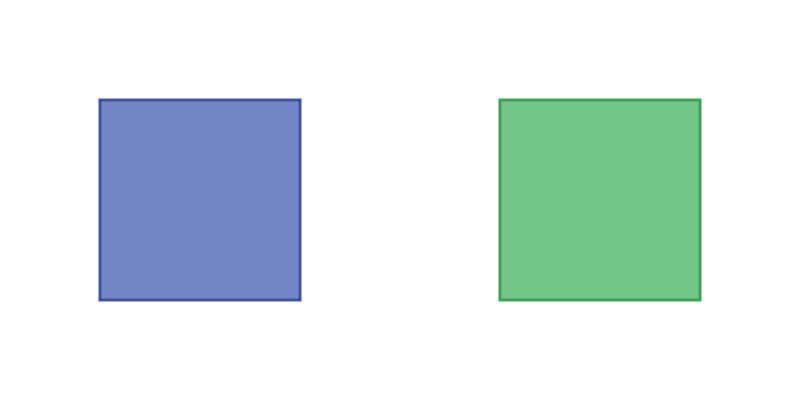
These two pentagons are the same size and shape, so they are congruent. It doesn't matter that one is rotated:
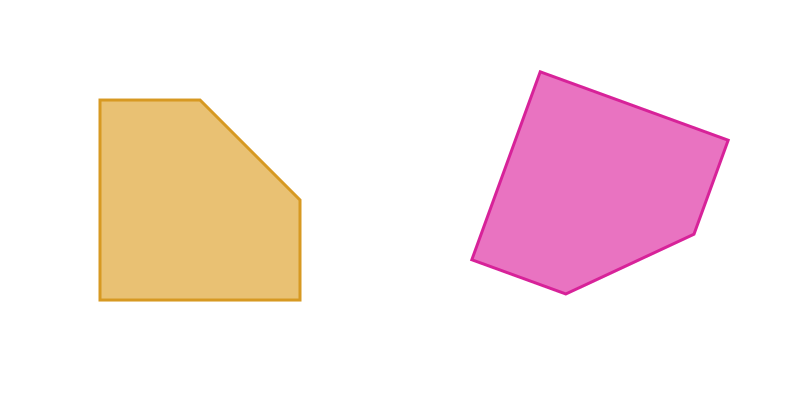
These two L-shapes are also the same size and shape, so they are congruent. It doesn't matter that one is a mirror image of the other:

Examples of incongruent shapes
These two squares have the same shape, but are different sizes, so they are incongruent:

These two shapes are both rectangles, but one is taller than the other. That means they are differently shaped rectangles, so they are incongruent:
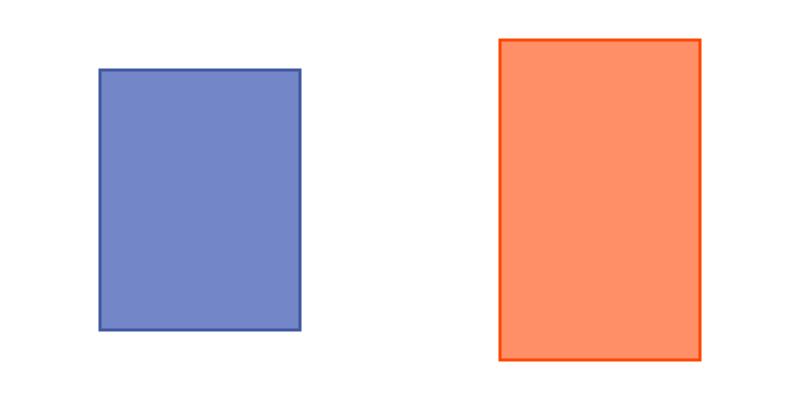
Complex shapes can be confusing if they are reflected and rotated. You might need to look carefully at these shapes to see that they are different, and so not congruent:

It helps to transform the second shape so that it is no longer rotated and mirrored, This makes it more obvious that the two shapes are different:

Tests for congruency
There are two ways to check if two shapes are congruent. They are equivalent:
- If one can be mapped onto the other by any combination of translation, rotation, and reflection transforms, they are congruent.
- If every corresponding side and angle is identical, they are congruent.
In the second case, it is important to make sure the two shapes have the same sides and angles in the same order. For example:
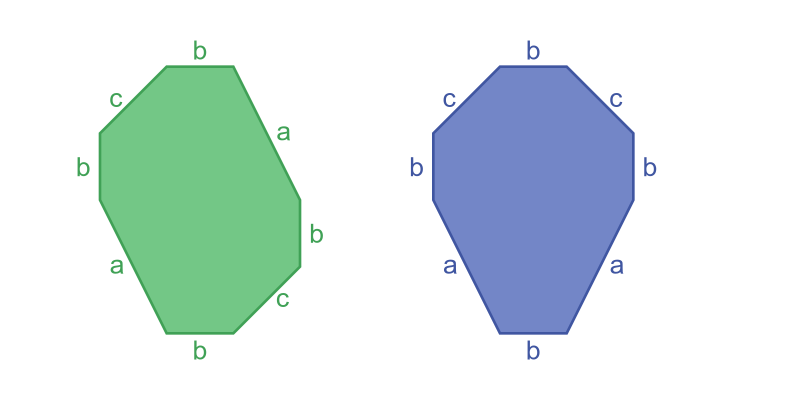
These two shapes have sides of the same length (two of length a, four of length b, and two of length c). They have the same set of angles too. But the shapes are obviously not the same. That is because the sides and angles are not in the same order, so the shapes are not congruent.
However, when one shape is a reflection of the other, the rules are slightly different:
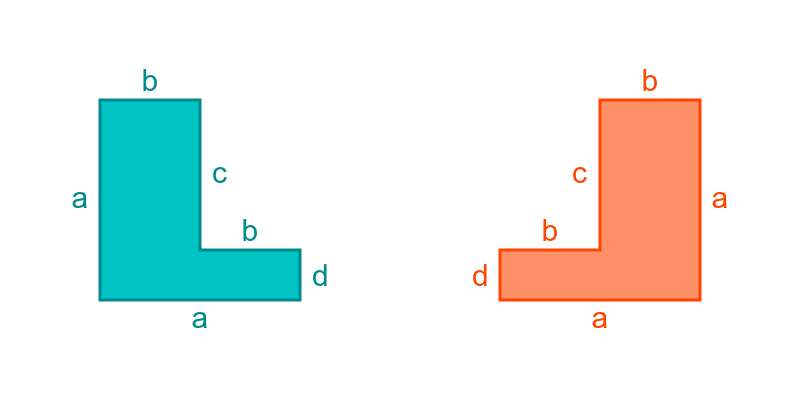
Because of the reflection, we must read the lines and angles in opposite directions:
- Reading clockwise for the base, the first shape has sides aabcbd.
- Reading counterclockwise from the base, the second shape also has sides aabcbd.
The angles are also the same in each case. This means that the shapes are congruent.
Related articles
Join the GraphicMaths Newsletter
Sign up using this form to receive an email when new content is added to the graphpicmaths or pythoninformer websites:

Popular tags
adder adjacency matrix alu and gate angle answers area argand diagram binary maths cardioid cartesian equation chain rule chord circle cofactor combinations complex modulus complex numbers complex polygon complex power complex root cosh cosine cosine rule countable cpu cube decagon demorgans law derivative determinant diagonal directrix dodecagon e eigenvalue eigenvector ellipse equilateral triangle erf function euclid euler eulers formula eulers identity exercises exponent exponential exterior angle first principles flip-flop focus gabriels horn galileo gamma function gaussian distribution gradient graph hendecagon heptagon heron hexagon hilbert horizontal hyperbola hyperbolic function hyperbolic functions infinity integration integration by parts integration by substitution interior angle inverse function inverse hyperbolic function inverse matrix irrational irrational number irregular polygon isomorphic graph isosceles trapezium isosceles triangle kite koch curve l system lhopitals rule limit line integral locus logarithm maclaurin series major axis matrix matrix algebra mean minor axis n choose r nand gate net newton raphson method nonagon nor gate normal normal distribution not gate octagon or gate parabola parallelogram parametric equation pentagon perimeter permutation matrix permutations pi pi function polar coordinates polynomial power probability probability distribution product rule proof pythagoras proof quadrilateral questions quotient rule radians radius rectangle regular polygon rhombus root sech segment set set-reset flip-flop simpsons rule sine sine rule sinh slope sloping lines solving equations solving triangles square square root squeeze theorem standard curves standard deviation star polygon statistics straight line graphs surface of revolution symmetry tangent tanh transformation transformations translation trapezium triangle turtle graphics uncountable variance vertical volume volume of revolution xnor gate xor gate
